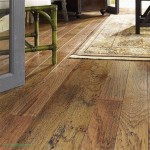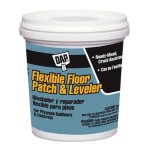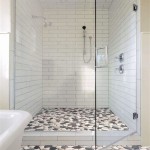Modern Living Room Floor Tiles: A Guide to Style and Functionality
The living room serves as the central hub of the modern home. It is a space for relaxation, entertainment, and socializing. The flooring in a living room plays a significant role in defining the overall aesthetic and functionality of the area. Floor tiles, in particular, have emerged as a popular choice for modern living rooms due to their durability, versatility, and aesthetic appeal. This article explores the different aspects of selecting and utilizing modern living room floor tiles, covering design options, material considerations, and practical benefits.
Design Trends in Modern Living Room Floor Tiles
Contemporary design emphasizes clean lines, minimalist aesthetics, and a harmonious blend of form and function. This philosophy extends to the selection of floor tiles for the living room. Several design trends have gained prominence in recent years, reflecting these modern preferences.
Large-format tiles are increasingly favored for their ability to create a seamless and spacious look. With fewer grout lines, these tiles offer a cleaner, more streamlined appearance, making the living room feel larger and less cluttered. The size of these tiles typically ranges from 24x24 inches to even larger formats, such as 36x36 inches or even larger rectangular shapes. Their installation requires precision and a perfectly level subfloor to prevent issues like lippage.
Another prominent trend is the use of neutral color palettes. Grays, beiges, creams, and off-whites are favored for their versatility and ability to complement a wide range of interior design styles. These colors create a calming and sophisticated atmosphere while providing a neutral backdrop for furniture and decor. However, the utilization of bold patterns and colors in specific accents or areas, such as a patterned rug-like tile arrangement, is also gaining traction, allowing for personalization without overwhelming the space.
Texture plays a crucial role in adding depth and interest to modern living room flooring. Tiles with textured surfaces, such as wood-look tiles with embossed grains or stone-look tiles with natural variations, are popular choices. These textures not only enhance the visual appeal of the flooring but also provide a tactile element that adds to the overall sensory experience of the space. Matte finishes are also favored over glossy finishes, as they offer a more subtle and sophisticated look while minimizing glare and reflections.
Geometric patterns are making a comeback in modern living room floor tile designs. These patterns can range from simple geometric shapes to more complex and intricate designs. Herringbone, chevron, and hexagon patterns are particularly popular, adding a touch of visual interest and character to the flooring. These patterns can be created using tiles of different colors or shades, or through the arrangement of tiles in a specific configuration.
Material Considerations for Living Room Floor Tiles
The choice of material is a critical factor in selecting floor tiles for the living room, as it directly impacts the durability, maintenance requirements, and overall aesthetic of the space. Several materials are commonly used for living room floor tiles, each with its own unique characteristics.
Porcelain tiles are a popular choice due to their exceptional durability, water resistance, and versatility. They are made from a dense clay that is fired at high temperatures, resulting in a strong and non-porous material. Porcelain tiles are resistant to scratches, stains, and fading, making them ideal for high-traffic areas like the living room. They are also available in a wide range of colors, patterns, and textures, including those that mimic natural stone and wood, offering a cost-effective alternative to natural materials.
Ceramic tiles are another option, although they are generally less durable and water-resistant than porcelain tiles. They are also made from clay but fired at lower temperatures, resulting in a softer and more porous material. Ceramic tiles are typically less expensive than porcelain tiles, making them a budget-friendly option for homeowners. However, they may require more frequent maintenance and are more susceptible to damage from moisture and impact.
Natural stone tiles, such as marble, granite, and limestone, offer a luxurious and elegant look for the living room. These materials are known for their unique veining, patterns, and textures, adding a touch of natural beauty to the space. However, natural stone tiles can be more expensive than porcelain or ceramic tiles and require more specialized maintenance. They are also more porous and susceptible to staining, so sealing is essential to protect them from damage.
Wood-look tiles, typically made from porcelain or ceramic, are a popular alternative to hardwood flooring. These tiles offer the aesthetic appeal of wood with the durability and water resistance of tile. They are available in a wide range of wood species, colors, and plank sizes, allowing homeowners to create a variety of looks, from rustic and traditional to modern and contemporary. Wood-look tiles are also easier to maintain than hardwood flooring and are resistant to scratches, dents, and fading.
Concrete tiles are gaining popularity in modern living rooms for their industrial and minimalist aesthetic. They are made from a mixture of cement, sand, and aggregates, and can be poured into various shapes and sizes. Concrete tiles offer a durable and low-maintenance flooring option, with a unique and raw look. They can be stained, polished, or sealed to achieve different finishes and are compatible with radiant floor heating systems.
Practical Benefits of Using Tiles in the Living Room
Beyond their aesthetic appeal, floor tiles offer several practical benefits that make them a desirable choice for living room flooring. These benefits relate to durability, maintenance, and overall functionality.
Durability is a key advantage of using tiles in the living room. Porcelain and ceramic tiles are highly resistant to scratches, stains, and fading, making them ideal for high-traffic areas. They can withstand heavy foot traffic, spills, and everyday wear and tear without showing signs of damage. This makes them a long-lasting flooring option that requires minimal maintenance over time.
Ease of maintenance is another significant benefit of floor tiles. They are easy to clean and maintain, requiring only regular sweeping and mopping. Unlike carpets, tiles do not harbor dust, allergens, or pet dander, making them a hygienic flooring option for families with allergies or pets. They are also resistant to stains and spills, which can be easily wiped clean without leaving permanent marks.
Water resistance is a crucial advantage, especially in areas prone to moisture or spills. Porcelain tiles, in particular, are highly water-resistant, making them suitable for living rooms connected to kitchens or dining areas. They are also resistant to mold and mildew growth, ensuring a healthy and hygienic living environment.
Tiles are compatible with radiant floor heating systems, providing efficient and comfortable heating during colder months. The thermal conductivity of tiles allows them to effectively distribute heat throughout the room, creating a warm and inviting atmosphere. This can be a significant advantage in climates with cold winters, enhancing the comfort and energy efficiency of the living room.
The versatility of tiles allows for creative design possibilities. They can be used to create various patterns, borders, and accents, adding visual interest and personality to the living room. Tiles can also be combined with other flooring materials, such as hardwood or carpet, to create unique and customized designs. This flexibility allows homeowners to express their individual style and create a living room that reflects their personal preferences.

25 Modern Tile Designs For Hall Walls And Floors 2025

Top 20 Modern Living Room Floor Tiles Design In 2025

Top 20 Modern Living Room Floor Tiles Design In 2025

Living Room Floor Tile Ideas A Beginner S Guide To Design Styles Country Floors Of America Llc

5 Floor Tile Design Ideas For Open Kitchen Living Dining Hall

600x600 800x800 Grey Marble Porcelain Tiles Living Room 80x80 Flooring Tile Made In Com

Living Room Floor Tiles Made In Flooring Best Design

Full Body Vitrified Floor Tiles Design For Living Room

Modern Living Room Floor Tiles Design Bedroom Vitrified Colors

Top Living Room Tile Trends Ideas For 2025 Oasis







